Grants & Fellowships
HDF is passionate about finding and funding the most promising, creative and paradigm-changing research.
![]() “ The Hereditary Disease Foundation creates a culture of creativity, excellence, collaboration, and a sense of community and shared purpose which helps to attract generations of scientists to join and stay in the field. Looking back on the decades of my scientific career, it all started with my very first grant from the Foundation.”
“ The Hereditary Disease Foundation creates a culture of creativity, excellence, collaboration, and a sense of community and shared purpose which helps to attract generations of scientists to join and stay in the field. Looking back on the decades of my scientific career, it all started with my very first grant from the Foundation.”

X. William Yang, MD, PhD
David Geffen School of Medicine at UCLA
HDF is passionate about finding and funding the most promising, creative and paradigm-changing research.
![]() “ The Hereditary Disease Foundation creates a culture of creativity, excellence, collaboration, and a sense of community and shared purpose which helps to attract generations of scientists to join and stay in the field. Looking back on the decades of my scientific career, it all started with my very first grant from the Foundation.”
“ The Hereditary Disease Foundation creates a culture of creativity, excellence, collaboration, and a sense of community and shared purpose which helps to attract generations of scientists to join and stay in the field. Looking back on the decades of my scientific career, it all started with my very first grant from the Foundation.”

X. William Yang, MD, PhD
David Geffen School of Medicine at UCLA
Data generated with HDF grants has allowed many researchers to receive major long-term funding from other sources, including the National Institutes of Health.
The following is a list of currently funded HDF researchers.
Grants
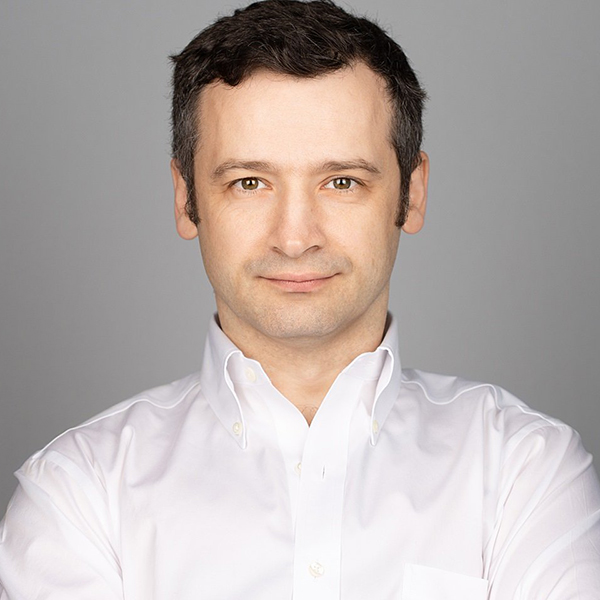
Gabriel Balmus, PhD
Institution: University of Cambridge, United Kingdom
Project Title: Discovery of therapeutic targets that can ameliorate Huntington’s disease
Recent research in Huntington’s disease focuses on how certain proteins interact and influence the disease. A key discovery is the role of a protein that interacts with another involved in DNA repair. Altering a specific part of this protein accelerates disease-related genetic changes, while maintaining it helps stabilize these changes. This interaction impacts the DNA repair process, with low levels of this protein leading to increased repair activity, and higher levels slowing it down. This is supported by patient studies. Additionally, a new interaction was found between this protein and an enzyme that labels proteins with a tag slating them for destruction, suggesting this enzyme might regulate the protein’s stability and, consequently, HD progression. This new understanding could lead to novel approaches in HD treatment.
Gabriel Balmus, PhD
University of Cambridge, United Kingdom
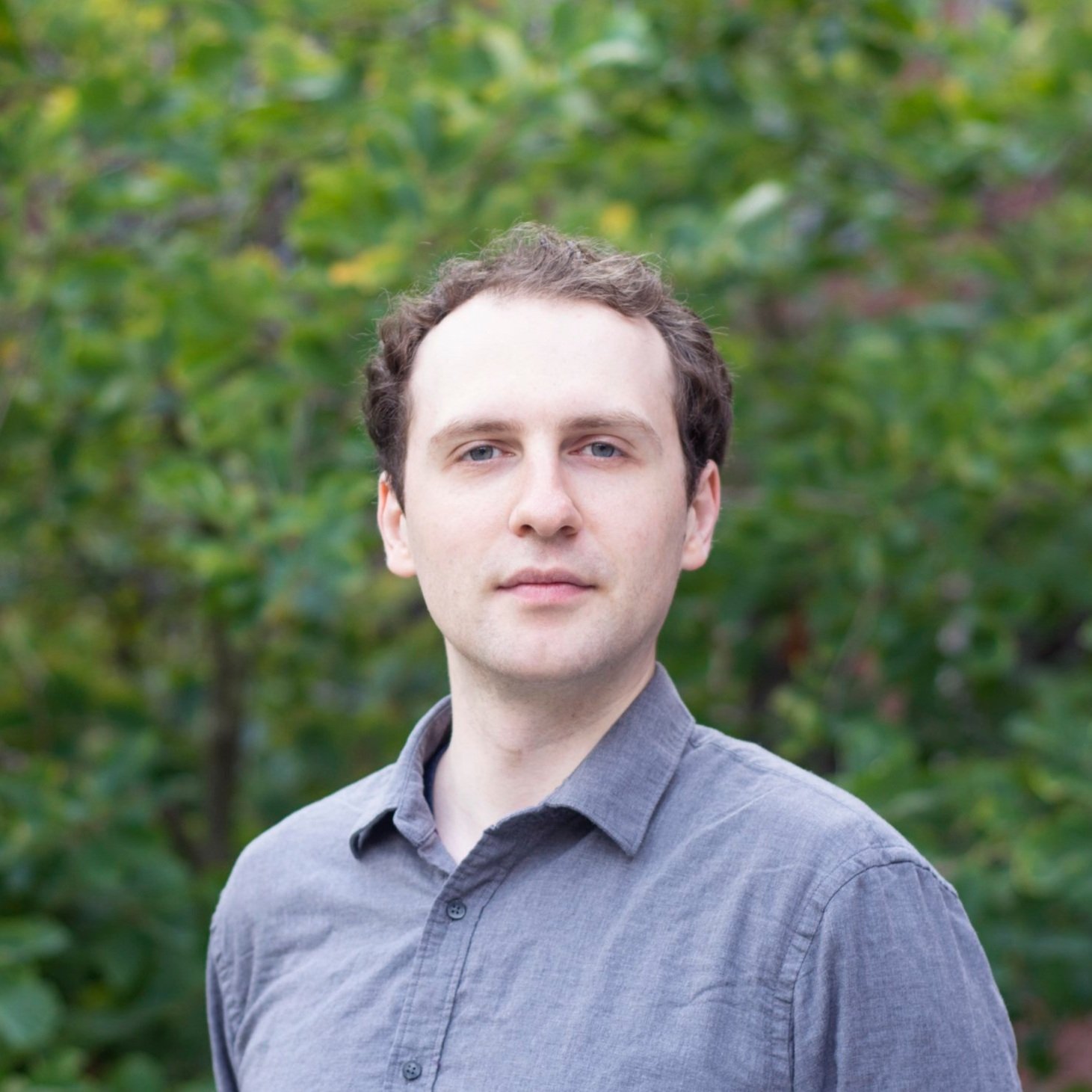
Bogdan Bintu, PhD
Institution: University of California, San Diego
Project Title: Imaging the drivers of toxicity in single cells of Huntington’s diseased human brains
How HD manifests in individual human brain cells remains unclear. Along with CAG repeat expansion, genome-wide association studies (GWAS) identified members of the DNA repair pathway, suggesting that toxicity results, at least partially, from the genomic expansion of CAG and associated DNA damage, rather than solely from the HTT protein pathology. To address this, a new imaging method called MERFISH will be used to examine in-depth the molecular factors behind HD cell-by-cell in human post-mortem tissues. Specifically the expression of thousands of genes will be imaged together with probes quantifying CAG expansion and antibodies for HTT aggregating and DNA repair machinery. The objective is to disentangle the role of protein aggregation and/or DNA damage for the pathology and gene expression of each cell within human patient samples. This research holds promise for the development of disease-modifying treatments.
Bogdan Bintu, PhD
University of California, San Diego
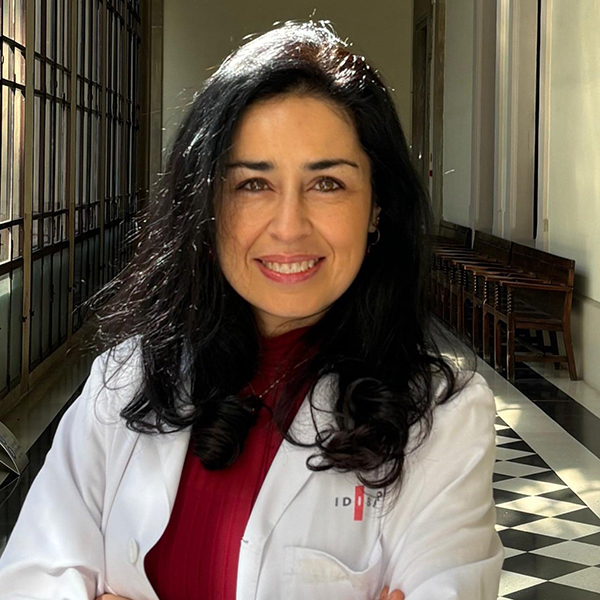
Verónica Inés Brito, PhD
Institution: University of Barcelona, Spain
Project Title: Exploring new therapeutic avenues for Huntington’s disease through RNA editing of mutant huntingtin
In Huntington’s disease, a faulty message from the huntingtin gene creates shorter, toxic versions of the Huntingtin protein. Dr. Brito’s team is studying a small mark called m6A, which controls how cells use genetic instructions. They found m6A is abundant in a specific part of the huntingtin message in mice with the disease. To understand how this mark affects the huntingtin message, they used a unique CRISPR protein, not as scissors but as a guide, to direct another protein like an eraser to remove m6A from the problematic spot. When they tried this in mutated cells in culture, they saw a decrease in the levels of short faulty messages.Dr. Brito now will test if they can slow or stop the disease in mice by using a similar system to erase this chemical mark from the huntingtin messages. Their research could lead to using CRISPR m6A editors as potential treatment in the future.
Verónica Inés Brito, PhD
University of Barcelona, Spain

Jeffrey Carroll, PhD
Institution: University of Washington
Project Title: Exploring the Entire Intact Huntingtin Genetic Message in Human Brains
The gene that codes for huntingtin is incredibly long. To study the gene in the brain, it would typically need to be cut up into little fragments to fit the specifications of sequencing machines. New technologies and machines are now available that don’t require the gene to be cut up first. In this project, Dr. Carroll will undertake the first-ever examination of the huntingtin gene in Huntington’s disease brain samples using this modern technology. This information will tell us how the entire unfragmented gene is connected and if there are certain parts of the gene that are impaired or are unique to people with HD. Dr. Carroll’s collaborators in the Valdmanis lab performed a similar analysis in Alzheimer’s disease brain samples and made surprising findings about how the genes are organized. Dr. Carroll is excited to apply this same analysis to HD as this information can lead to the design of new drugs for HD.
Jeffrey Carroll, PhD
University of Washington
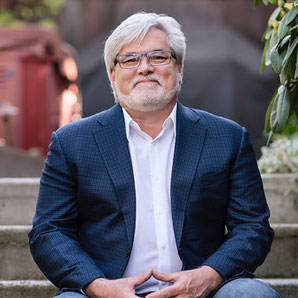
Steven Finkbeiner, MD, PhD
Institution: Gladstone Institutes; University of California, San Francisco
Project Title: Investigation of Genetic Modifiers in Huntington’s Disease Age of Onset
2022 Leslie Gehry Prize for Innovation in Science
Huntington’s disease is caused by a CAG repeat expansion in the huntingtin gene. However, other genes also contribute to the loss of brain cells typically observed in HD and likely impact the age when symptoms begin to show. To identify genetic changes, called variants, that may modify the age of onset in HD, Dr. Finkbeiner and his team analyzed the genetic makeup of eleven HD families that displayed large variation in age of onset. They found variants in genes that regulate biological functions that promote the clearance of damaged or unwanted proteins. The variants in these regulators may be modifying the age of onset. Dr. Finkbeiner’s team evaluated one of these regulator genes (OTUD3) and hypothesizes that it influences protein clearance and other biological functions impacting neurodegeneration and is associated with delayed age of symptom onset. In this project, he will perform a deep assessment of OTUD3 and investigate other regulator genes that were identified as modifying the age of onset in HD.
Steven Finkbeiner, MD, PhD
Gladstone Institutes; University of California, San Francisco

Rachel J. Harding, PhD
Institution: University of Toronto, Ontario, Canada
Project Title: Investigations to study HAP40, partner of the Huntington’s disease protein
2024 Nancy S. Wexler Young Investigator Prize Recipient
Scientists think the Huntington’s disease protein, HTT, is like a molecular Swiss army knife, where it does lots of different jobs in the cells of our bodies, partnering with different proteins. HAP40 is an important protein partner of HTT yet research to work out how partnering with HAP40 helps HTT work has been stalled due to a lack of good tools for scientists to “look” at HAP40 in different HD lab models. Dr. Harding’s team has developed special chemical tools that bind onto HTT, HTT together with HAP40, or HAP40 alone. She will use these tools to work out where each of these molecules is found in cells, what other proteins they hang out with, and how this might differ between regular and HD cells. She will also look at what happens in HD cells when you take away all of the HAP40. This research will give us insight into the important HAP40 protein and could find new ways to treat HD.
Rachel J. Harding, PhD
University of Toronto, Ontario, Canada

David Housman, PhD
Project Title: Reversing the repeat expansion in Huntington’s disease with a DNA repair enzyme therapy
2010 Leslie Gehry Prize for Innovation in Science
The research team is focusing on a therapy for Huntington’s disease by increasing a DNA repair enzyme, known as FAN1, within the brain. This enzyme has the potential to halt the expansion of certain DNA segments that worsen the disease. Using a specially designed virus, Dr. Housman and his team aim to deliver and enhance the enzyme directly in the affected brain cells. By doing so, they hope to prevent or reverse the damage caused by the disease. The effectiveness of this treatment will be tested in mouse models, monitoring improvements in brain structure and function, as well as overall behavior. Through advanced imaging techniques, the researchers will also closely examine changes in the brain’s architecture, ensuring the therapy targets only the problematic cells. This project might pave the way for a new therapeutic approach for patients.
David Housman, PhD
Massachusetts Institute of Technology
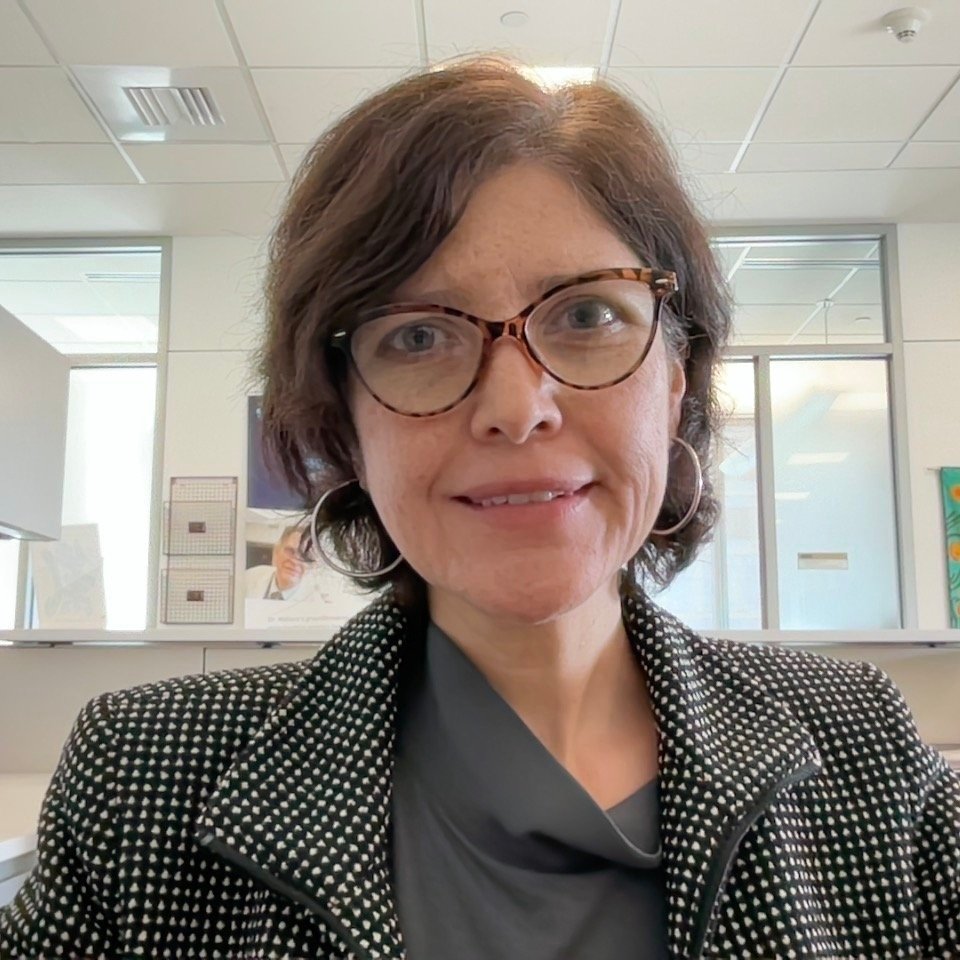
Icnelia Huerta Ocampo, MD, PhD
Institution: The Children’s Hospital of Philadelphia
Project Title: Cell responses to gene therapies
The goal of this project is to advance clinical research on HD. By using technological breakthroughs in her lab, building upon substantial preliminary work, Dr. Huerta Ocampo hopes to establish a solid foundation for advancing novel therapies. In this project, she will be testing the effect and consequences of modalities that will either inhibit repeat expansion or knock down mutant huntingtin in brain cells of mouse models of disease. More specifically, she will use viral particles to modify the expression of genes relevant to HD pathology in two different mouse models. While each of the treatments will target the population of the neurons that are most affected during HD, they will not target every single cell. That is, some cells will get therapy, and some will not. She now has the capabilities to assess how therapy impacts the cells that received the therapy vs. those that did not.
Icnelia Huerta Ocampo, MD, PhD
The Children’s Hospital of Philadelphia

Ali Khoshnan, PhD
Institution: University of Southern California
Project Title: Studies on Gut Defects in Huntington’s Disease
The gene that causes Huntington’s disease is expressed in every cell in the body. The human gut lining is made up of various types of cells that control digestion, nutrient absorption, keep harmful bacteria away, and communicate with other organs including the brain. The gut lining renews itself every 4-7 days for optimal function and specialized master cells, known as stem cells, produce different types of cells as needed. People with the gene that causes Huntington’s disease may have a defective gut lining, but research is lacking. Dr. Khoshnan will test whether the mutation that causes HD impairs gut lining renewal and produces sick cells. A sick gut could negatively affect the brain since optimal brain function requires a healthy gut to produce the essential nutrients, growth factors and neuromodulators, and to prevent inflammation. A prolonged unhealthy gut will damage brain cells and may kill them. By understanding the situation in the gut of people with the gene that causes HD we may learn how gut defects contribute to disease onset and progression and may help to develop therapies and specific diets to make the gut healthy again.
Ali Khoshnan, PhD
University of Southern California

Tamara Maiuri, PhD
Institution: McMaster University, Hamilton, Ontario, Canada
Project Title: Can We Use DNA Damage Levels in Huntington’s Disease Patient Blood to Guide Clinical Trials?
One of the biggest goals in Huntington’s disease research is to reach a place where we can start treatment before symptom onset. But how can we test if a drug works when we can’t use symptoms as a measurement? One thing known to happen before the onset of symptoms is increased damage to DNA. Dr. Maiuri will determine whether, in asymptomatic individuals carrying the expanded HD gene, increased DNA damage can be detected using small blood samples from a finger prick. DNA damage will first be measured using the gold standard method, called a comet assay. These results will be compared to another method, called Repair-Assisted Damage Detection, which researchers in the Truant lab, where Dr. Maiuri works, have found to be even more sensitive than the comet assay. If successful, this non-invasive testing process can be streamlined so that any company testing a new HD treatment can easily monitor whether their drug is working without the need to wait for symptom onset.
Tamara Maiuri, PhD
McMaster University, Hamilton, Ontario, Canada

A. Jenny Morton, PhD, ScD, FRSB
Institution: University of Cambridge, England
Project Title: Can core body temperature be used as a readout for changes in metabolism in Huntington’s disease?
It has long been suspected that changes in metabolism are important in Huntington’s disease because so many patients become very thin. But metabolism is complex and difficult to study in humans, so evidence for metabolic defects in people with HD is scarce. We know from a metabolomics study that dozens of metabolites are abnormal in presymptomatic HD sheep. In this project, Dr. Morton will use thermal imaging of sheep to see if core body temperature that is directly related to metabolism is different in HD sheep compared to normal sheep. She will then determine if temperature regulation deteriorates further in the HD sheep as the disease progresses. If this is the case, then core body temperature could be used as a non-invasive ‘surrogate’ biomarker to track metabolic changes in HD.
A. Jenny Morton, PhD, ScD, FRSB
University of Cambridge, England
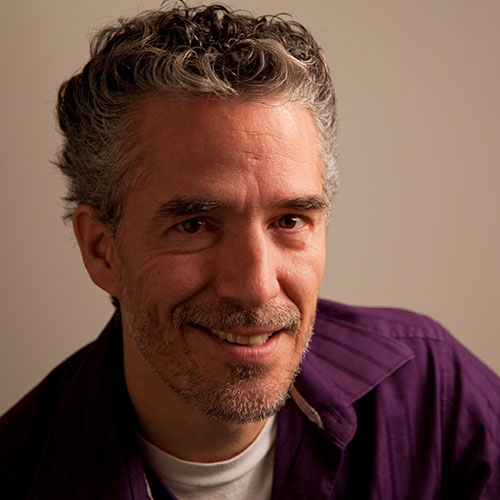
Christopher E. Pearson, PhD
Project Title: Investigating How DNA Damage Repair Is Faulty in Huntington’s Disease
DNA contains the information to make all the proteins that cells in the body need to carry out their day-to-day function. The maintenance of DNA in brain cells is important for cell survival, longevity, and function. In healthy cells, breaks in DNA strands are normal and occur frequently. The broken strands are readily repaired to prevent mutations, damage, and premature cell death. In Huntington’s disease, this repair pathway does not work correctly, leading to the accumulation of DNA damage in the brain cells affected by the disease. A large complex of proteins is responsible for repairing DNA damage and the activity of this complex gets derailed in HD brains. The incorporation of the expanded Huntingtin protein into the DNA repair complex negatively alters the function and associations of the complex. Dr. Pendlebury will study the interactions between these proteins to identify mechanisms to boost DNA repair activity.
Christopher E. Pearson, PhD
The Hospital for Sick Children (SickKids), Toronto, Ontario, Canada

Chiara Scaramuzzino, PhD
Institution: Grenoble Institut des Neurosciences, France
Project Title: Restoring Organelle Trafficking to Rescue Huntington’s Disease
2023 Nancy S. Wexler Young Investigator Prize Recipient
Communication between two key brain structures, the cortex and striatum, is defective in Huntington’s disease. These brain regions can send each other molecular messages, called neurotropic factors, that aid in the survival of brain cells. However, the expanded form of Huntingtin alters neurotropic factor signals from the cortex to the striatum, causing the brain cells in the striatum to die. Dr. Scaramuzzino identified that Huntingtin also conveys survival signals from the striatum back to the cortex to maintain brain communication. Her work uncovered that this striatum-to-cortex communication loop is impaired in HD. She aims now to improve the communication between these two brain regions by restoring Huntingtin’s function during the transport of neurotrophic factors. To do this, she hopes to enhance the delivery of these molecular messages by promoting Huntingtin-mediated trafficking to the cortex.
Chiara Scaramuzzino, PhD
Grenoble Institut des Neurosciences, France

Charlene Smith, PhD
Institution: University of California, Irvine
Project Title: Unraveling the impact of enlarged granules in the powerhouse of the cell in Huntington’s disease
In HD, mitochondria, the powerhouse of the cell, do not function appropriately. Dr. Smith and her colleagues previously saw, using a powerful microscope, that there are enlarged granules in HD mitochondria that are made up of RNA, the “transcript” of DNA to make proteins. Dr. Smith proposes to investigate how the enlarged RNA granules affect mitochondrial structure, content and functions, including energy production, handling excess calcium and toxic molecules called reactive oxygen species, and how these granules affect removal and clearance of the mitochondria. She also aims to discover what causes the granules to become larger in HD, and whether import of proteins into the mitochondria is disrupted, causing the granules to become enlarged. The proposed work will use patient stem cell derived models, targeting the area most affected in HD, the striatum, making neurons in 2D and in 3D.
Charlene Smith, PhD
University of California, Irvine

X. William Yang, MD, PhD
Institution: Semel Institute and David Geffen School of Medicine, University of California at Los Angeles
Project Title: Probing Huntingtin Binding Protein HAP40 in Cortical Biology and Pathology in Huntington’s Disease
2014 Leslie Gehry Prize for Innovation in Science
Huntingtin is a large protein that binds to many other proteins. Since Huntington’s disease is caused by the mutated form of Huntingtin, changes in the way the mutant protein interacts with its partners may help explain why certain brain cells are particularly vulnerable in HD while others are spared, and where we could target to prevent or treat HD. HAP40 is a protein that binds to the Huntingtin protein in a one-to-one manner (akin to its best friend) in a cell. Preliminary study from Dr. Yang’s lab found that mutant mice without HAP40 during brain development show remarkable degeneration of brain cells called neurons in the cortex, a brain region critical for cognition, emotion, and motor control. He will now study the normal role of HAP40 in the development of the cortex, and test whether boosting HAP40 levels could reduce symptoms in a mouse model of HD.
X. William Yang, MD, PhD
Semel Institute and David Geffen School of Medicine, University of California at Los Angeles
Postdoctoral Fellowships

Swati Balakrishnan, PhD
Institution: University of Toronto, Canada
Project Title: Investigating the role of a protein variant in damage to genetic material
The huntingtin gene contains repeating ‘CAG’ DNA letters. Too many CAG repeats causes Huntington’s disease, and as certain cells age they can erroneously add more repeats to the gene. This type of mutation is usually fixed by many molecular machines called DNA repair proteins. One of these proteins is RPA, which binds DNA and signals other repair machines to find and correct damage. RPA has another version called Alt-RPA, which works against RPA. Alt-RPA is seen at high levels in HD brains compared to healthy ones and contributes to expansion of CAG repeats, but little is known about how it works or how to block its action. Dr. Balakrishnan aims to visualize Alt-RPA using cutting-edge microscopes, discover the kind of DNA it interacts with and design molecules to prevent Alt-RPA from working. Her study will determine the function of this crucial DNA repair protein and help discover HD therapies.
Swati Balakrishnan, PhD
University of Toronto, Canada
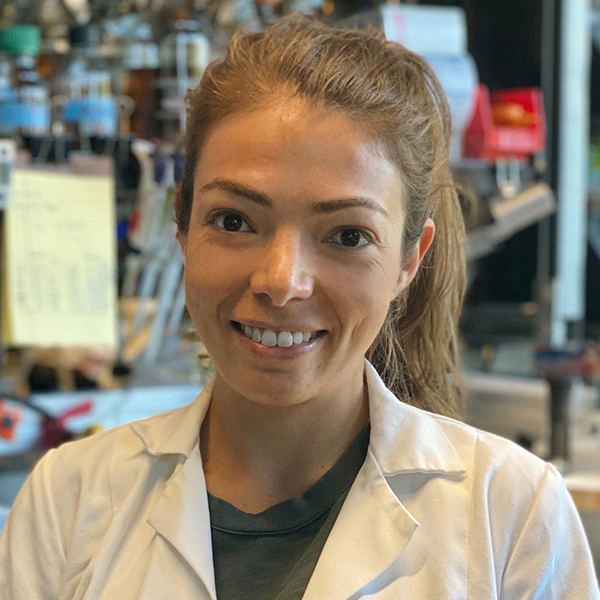
Natalia Barbosa, PhD
Mentor: Judith Frydman, PhD
Institution: Stanford University, Palo Alto, CA
Project Title: Linking proteostasis and mitochondrial dysfunction in Huntington’s disease
2022 Nancy S. Wexler Young Investigator Prize Recipient
A prominent feature of Huntington’s disease is the formation within neurons (brain cells) of large protein clumps which participate in neuronal break down. However, it remains unclear just how these protein clumps impair essential cellular components, for example, mitochondria, which are essential for energy metabolism and signaling processes within neurons. Nor do we know how the clumps might interfere with proteostasis, the process that oversees protein synthesis, folding, and degradation within cells. We do know that disrupting proteostasis could lead to the breakdown of multiple cellular processes. Dr. Barbosa investigates, on a molecular level, the connections between mitochondrial collapse and proteostasis in HD across biochemical, genetic, and structural fronts. Understanding these connections may change the way we think about Huntington’s disease, potentially opening up new strategies for effective therapeutic interventions.
Natalia Barbosa, PhD
Stanford University, Palo Alto, CA
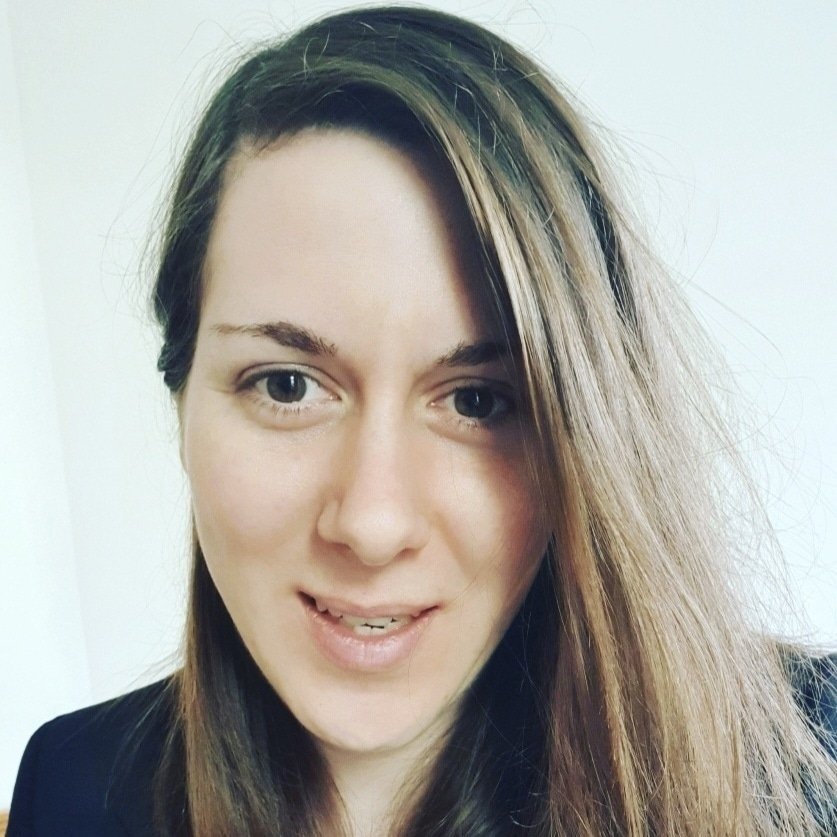
Ivana Vujkovic Bukvin, PhD
Mentor: Judith Frydman, PhD
Institution: Stanford University
Project Title: Mapping the shape of pathogenic huntingtin during its synthesis on the ribosome
Dr. Bukvin wants to study a protein called huntingtin, which is made inside our cells on a machine called a ribosome. This protein is important because changes in its shape might lead to Huntington’s disease. She and her team in the Frydman laboratory are curious if the shape of huntingtin changes while it is being made by the ribosome and if this change affects how it works and interacts with other proteins in our cells. They are also interested in seeing how huntingtin interacts with chaperone proteins, which help proteins acquire their correct shape in cells. To do this, Dr. Bukvin will use different colored dyes to mark huntingtin proteins while they are being made by the ribosome. The color footprints will help her describe the different huntingtin proteins shapes the ribosome creates in great detail and identify if any of these shapes are harmful to cells.
Ivana Vujkovic Bukvin, PhD
Stanford University

Katherine Croce, PhD
Mentor: Ai Yamamoto, PhD
Institution: Columbia University Medical Center, New York
Project Title: Clearing Aggregates to Treat Huntington’s Disease
To maintain their health and function, cells are continuously recycling debris and structures that are no longer needed. In neurodegenerative disorders such as Huntington’s disease, this process is slowed because the disease-causing mutation results in the creation of more debris than the cell can normally handle. Previous work by Dr. Croce in the Yamamoto lab identified a way to help cells overcome this problem by increasing levels of a protein known as Alfy. Dr. Croce has devised a new way to increase Alfy levels that has the potential of being used as a therapeutic. This approach will be tested in mice that model HD to determine if this new strategy can be used to either slow or reverse the disease in mice that are already showing symptoms.
Katherine Croce, PhD
Columbia University Medical Center, New York

Hassan Fakih, PhD
Mentor: Anastasia Khvorova, PhD
Institution: University of Massachusetts Chan Medical School
Project Title: Developing nucleic acid nanoparticles for improved RNAi therapeutics to treat Huntington’s disease
Small interfering RNAs (siRNAs) are an emerging class of drugs that target disease-causing RNA for degradation in a sequence-specific manner. Such targeting is promising for hereditary diseases, where we want to deactivate (or “silence”) the disease-causing protein encoded by a specific gene. Unfortunately, siRNAs face challenges when injected into the body, as they are unstable and not delivered to their target organ/cells. However, recent advances have led to the first approvals of siRNA drugs, in this case drugs that target hereditary diseases in the liver. This success is due to the use of highly specific targeting ligands and nanoparticles capable of protecting and delivering the drug to the liver. Dr Fakih, with the Khvorova lab, plans to develop and optimize new nanoparticles capable of delivering siRNA drugs beyond the liver, specifically to the brain.
Hassan Fakih, PhD
University of Massachusetts Chan Medical School

Terence Gall-Duncan, PhD
Mentor: Christopher E. Pearson, PhD
Institution: The Hospital for Sick Children (SickKids), Toronto, Ontario, Canada
Project Title: Reversing the expansion mutation that causes Huntington’s disease
The mutation causing Huntington’s disease, a piece of DNA which repeats too many times, is very unusual. If DNA is like an instruction manual that tells our cells how to make proteins, DNA with the HD mutation is like a misprinted book with one of the pages repeated over and over and over again. When a neuron (brain cell) uses these misprinted instructions, it creates a toxic mutant protein. Dr. Gall-Duncan is characterizing and assessing a small molecule which finds misprinted repeating pages and removes them, leaving behind properly printed instructions and in effect, undoing the mutation. When HD mouse models are treated with this molecule, they become less anxious and have better motor functions. Their neurons produce fewer toxic protein clumps and other features of neurodegeneration (like DNA damage). Dr. Gall-Duncan and the Pearson laboratory believe there is therapeutic potential in this exciting small molecule.
Terence Gall-Duncan, PhD
The Hospital for Sick Children (SickKids), Toronto, Ontario, Canada
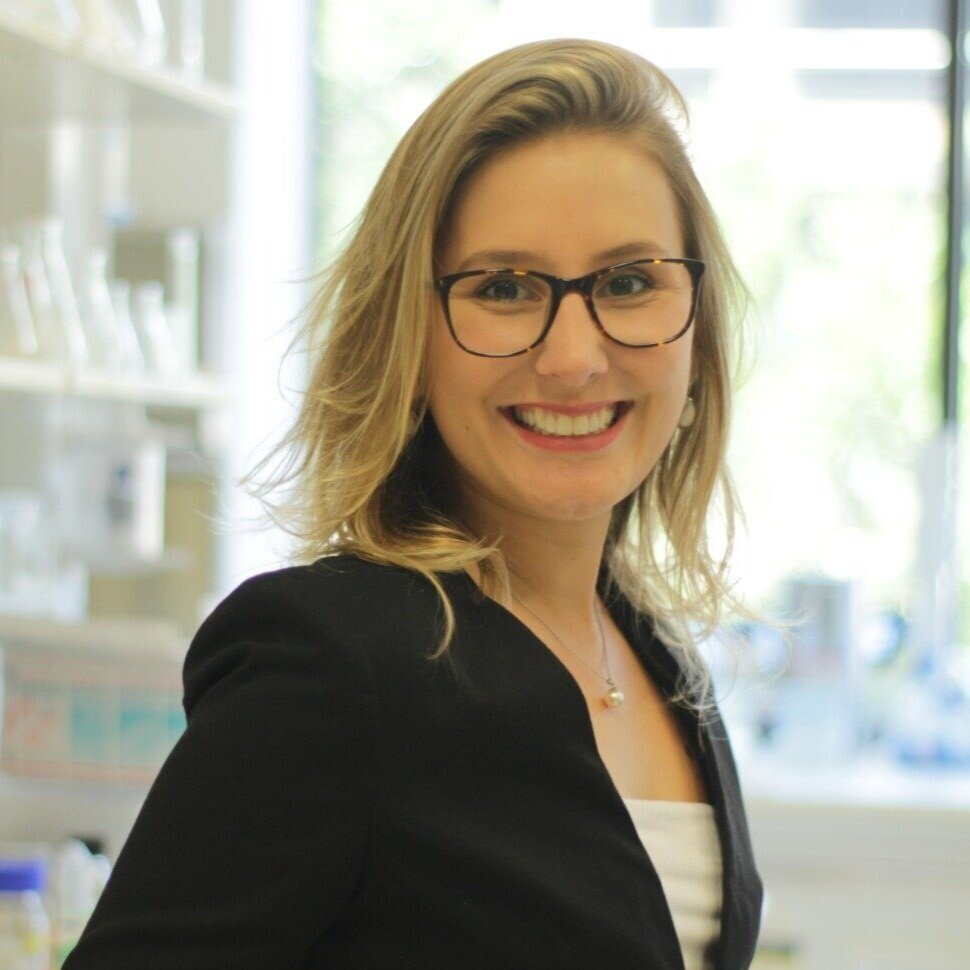
Carolina Gubert, PhD
Institution: The Florey Institute of Neuroscience and Mental Health/University of Melbourne, Australia
Project Title: Targeting the gut bugs in Huntington’s disease: Identifying novel therapeutic opportunities
This project was inspired by increasing evidence that bugs inhabiting the gut influence brain function and dysfunction, and that the gut microbial community is abnormal in mice and people with Huntington’s disease. It has also been shown that the imbalanced gut bacterial profile observed in individuals carrying the HD gene is associated with lower cognitive performance and poorer clinical outcomes. In HD mice, Dr. Hannan’s lab recently showed that this phenomenon appears even before motor symptoms. However, they do not yet fully understand the mechanisms mediating this imbalance nor do they know whether an intervention that returns the community of bugs towards a normal profile might be therapeutic. This project will address these important questions in HD mice by using environmental, microbial and pharmacological interventions targeting the gut microbial imbalance and hopefully ameliorating brain dysfunction. This project may facilitate future development of new treatments for people with HD.
Carolina Gubert, PhD
The Florey Institute of Neuroscience and Mental Health/University of Melbourne, Australia

Joseph Hamilton, PhD
Mentor: Sarah J. Tabrizi, FRCP, PhD, FMedSci
Project Title: Exploring the Role of the PMS1 Gene in Huntington’s Disease
Small genetic variations in a gene called PMS1 determine the age when someone with the gene for Huntington’s disease begins showing movement issues, but we do not know why this occurs. PMS1 may cause additional CAG repeat expansion within the huntingtin gene, leading to a more toxic Huntingtin protein. In this project, Dr. Hamilton will measure CAG repeats in cells derived from people with HD after reducing PMS1 levels to establish whether PMS1 is involved. Dr. Hamilton will also assess PMS1 to identify specific regions of the gene that are required for this CAG expansion to take place. Through a collaboration with Rgenta Therapeutics, cells will also be treated with drugs known to reduce levels of PMS1, which could be the first step in providing patients with a novel disease-modifying treatment.
Joseph Hamilton, PhD
University College London (UCL) Institute of Neurology, United Kingdom

Ryan Hildebrandt, PhD
Mentor: Eric T. Wang, PhD
Institution: University of Florida
Project Title: Investigating Neuron Transport Issues in Huntington’s Disease
One function of the Huntingtin protein is transporting material around highly complex cells in the brain, called neurons. This process is important for neuronal survival due to impacts in the nucleus, the central area of the cell where genetic material is housed, and the distant branches of neurons far away from the nucleus, which are critical for cell-to-cell communication. In Huntington’s disease, the ability to transport cellular components between these locations appears to be affected both by decreased amounts of normal Huntingtin protein and increased amounts of mutated Huntingtin protein. However, we do not fully understand which contributes more to altered cellular transport, nor do we know all genes that are affected by transport deficits in Huntington’s disease. Dr. Hildebrandt aims to create systems to track the production of gene products in the nucleus and transport of these products to the outer branches of neurons. By reducing levels of normal or mutated huntingtin protein, he will determine which has a larger impact on transport and function. Greater knowledge on this process could aid in the design of future therapies.
Ryan Hildebrandt, PhD
University of Florida

Hyeseung Lee, PhD
Mentor: Myriam Heiman, PhD
Institution: Picower Institute for Learning and Memory
Massachusetts Institute of Technology, Cambridge
Project Title: Therapeutic targeting of Huntington’s disease with key regulators of innate immunity
In Huntington’s disease, mutant huntingtin protein (mHTT) is expressed everywhere in the body. However, specific types of cells within the brain’s cortex and basal ganglia are more likely to die than other types of cells or than cells elsewhere in the body. This circumstance highlights the importance of understanding how each of these different types of cells respond to mHTT.
Dr. Lee and colleagues recently discovered a cell type-specific activation of innate immune signaling that they believe leads to enhanced neuronal vulnerability in HD. They hope to identify key genes that activate this immune signaling and test their therapeutic potential in Huntington’s disease.
Hyeseung Lee, PhD
Picower Institute for Learning and Memory
Massachusetts Institute of Technology, Cambridge

Srivathsa Magadi, PhD
Mentor: Walker Jackson, PhD
Institution: Linköping University, Sweden
Project Title: Modulate immune cells of the brain to alleviate Huntington’s disease
Microglia, the immune cells of the brain, have both neuroprotective and neurotoxic potential. A fine balance between these opposing capacities is disrupted in brain diseases. Dr. Magadi and colleagues found that the brains of people with Huntington’s disease produce a specific form of a ribosomal protein, Rps24, which the brains of individuals without Huntington’s do not. They hypothesize that this form of the protein is used by microglia to help the brain fight the disease. To test this hypothesis, Dr. Magadi will use cells in a dish to understand the molecular purpose of this version of the Rps24 protein. He will also use genetically engineered mouse models that enable researchers to control the production of the potentially beneficial version of Rps24 in the brain. If this form of the Rps24 protein can alter the course of the disease in mouse models, such findings can potentially be used to tailor drugs that will elicit similar effects in humans.
Srivathsa Magadi, PhD
Linköping University, Sweden

Christian Makhoul, PhD
Mentor: Danny Hatters, PhD
Institution: University of Melbourne, Australia
Project Title: Stuck in a loop: how mutant huntingtin could be exacerbating its own mutation
The aim of this research project is to uncover cell processes that have become compromised in the context of Huntington’s disease. Proteins make up a core component of the cell composition and interact with each other to tightly regulate processes that are crucial for cell and organ health. In Huntington’s disease, specialized regions of the brain are dramatically affected due to a mutation of a single gene that encodes the huntingtin protein. Using specialized techniques that monitor how protein interactions are changed, it was uncovered that huntingtin may be interacting with other cell proteins to exacerbate its own mutation. This is an exciting discovery that has not been previously documented. This project aims to further explore the details of this interaction to understand how it can be regulated to mitigate disease.
Christian Makhoul, PhD
University of Melbourne, Australia

Devon Pendlebury, PhD
Mentor: Leslie M. Thompson, PhD
Institution: University of California, Irvine
Project Title: Investigating How DNA Damage Repair Is Faulty in Huntington’s Disease
DNA contains the information to make all the proteins that cells in the body need to carry out their day-to-day function. The maintenance of DNA in brain cells is important for cell survival, longevity, and function. In healthy cells, breaks in DNA strands are normal and occur frequently. The broken strands are readily repaired to prevent mutations, damage, and premature cell death. In Huntington’s disease, this repair pathway does not work correctly, leading to the accumulation of DNA damage in the brain cells affected by the disease. A large complex of proteins is responsible for repairing DNA damage and the activity of this complex gets derailed in HD brains. The incorporation of the expanded Huntingtin protein into the DNA repair complex negatively alters the function and associations of the complex. Dr. Pendlebury will study the interactions between these proteins to identify mechanisms to boost DNA repair activity.
Devon Pendlebury, PhD
University of California, Irvine

Sridhar Selvaraj, PhD
Mentor: Matthew Porteus, MD, PhD
Institution: Stanford University, Palo Alto, CA
Project Title: Development of a stem-cell based therapy for Huntington’s disease
Huntington’s disease is an inherited neurodegenerative disease with no effective disease-modifying treatment. A potential therapeutic approach for HD would be to deliver protective proteins into the brain to prevent the breakdown of neurons (brain cells). Recent studies have shown that stem cell-derived neural cells have moderate therapeutic potential for HD in mouse models. Delivering protective proteins through these stem cell-derived neural cells could be a potential treatment option for humans with Huntington’s as well. In this study, Dr. Selvaraj will test the therapeutic potential of this approach for the delivery of four different protective proteins into HD mouse models. The study will provide a proof-of-concept platform for stem cell-based delivery of therapeutic proteins as a novel treatment approach for HD.
Sridhar Selvaraj, PhD
Stanford University, Palo Alto, CA
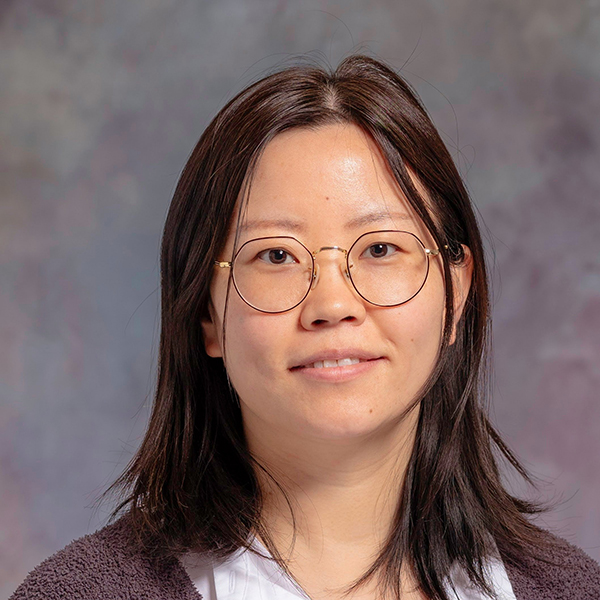
Xiaojing Sui, PhD
Mentor: Richard Morimoto, PhD
Institution: Northwestern University
Project Title: Watching how protein clearance becomes faulty with aging in Huntington’s disease
The health and function of our cells rely on the recycling machine, known as the proteasome, to clean up old and damaged proteins. However, with Huntington’s disease, the proteasome cannot do its job properly and it gets worse as patients get older. Dr. Sui aims to understand exactly how this happens. She has developed a high-throughput and very sensitive approach, which allows her to watch how the proteasome changes its shape in HD in unprecedented detail. Using this method in worms that model HD, she has found that the proteasome is getting jammed up with too much garbage to clean when animals get old. She is now studying how the HD mutation makes the proteasome slow down even more at the molecular level. This helps her understand why HD gets worse over time. And if she can figure out how to fix this problem with the proteasome, it might lead to new treatments for HD.
Xiaojing Sui, PhD
Northwestern University
